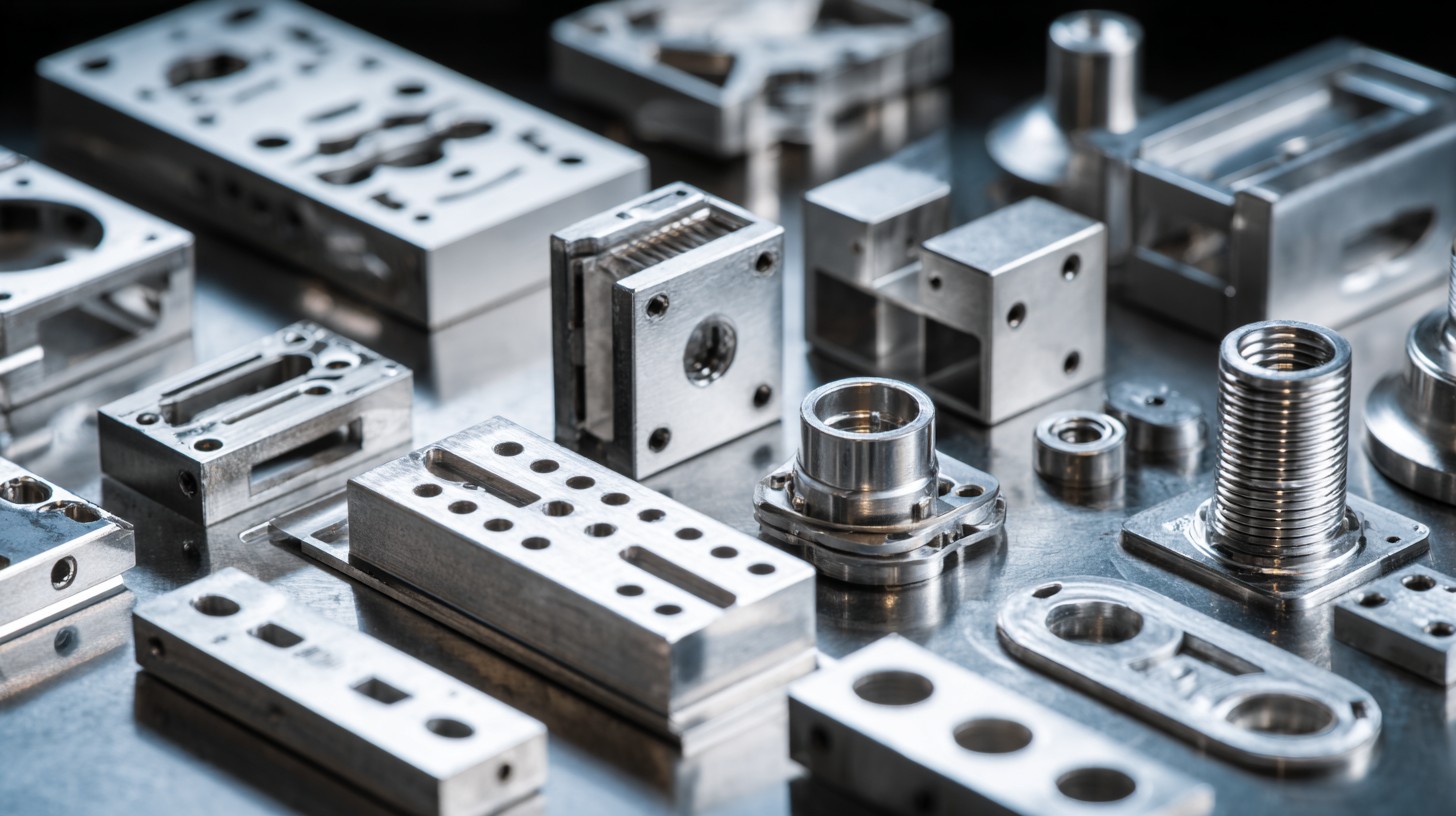
Ultimate Guide to Choosing the Best Stamping Parts for Your Manufacturing Needs
In the rapidly evolving manufacturing industry, the selection of the right stamping parts is critical to ensuring efficiency, quality, and cost-effectiveness in production processes. According to a recent report by Grand View Research, the global metal stamping market is projected to reach USD 60.49 billion by 2027, growing at a CAGR of 5.9%. This growth underscores the importance of understanding the various alternatives available when choosing stamping parts. Whether for automotive, aerospace, or consumer electronics, selecting optimal stamping components can significantly influence product performance and reliability. As manufacturers are increasingly looking for solutions that enhance productivity while minimizing costs, recognizing the diverse alternatives in stamping strategies becomes essential. This guide will delve into different types of stamping parts, their applications, and key factors to consider, ensuring that you make informed decisions tailored to your specific manufacturing needs.

Understanding the Different Types of Stamping Parts in Manufacturing Processes
When it comes to manufacturing, understanding the different types of stamping parts is crucial for achieving efficiency and high-quality output. Stamping parts are integral to various industries, from automotive to electronics, and they come in a range of forms including brackets, housings, and clips. Each type of stamping part serves a specific function and is produced using various techniques such as progressive die stamping, sheet metal stamping, and deep drawing. Knowing the characteristics and applications of these parts is essential for selecting the right components for your projects.
Progressive die stamping, for instance, is ideal for producing high volumes of complex shapes with precision. It allows for multiple operations to occur within a single die, significantly increasing production speed. On the other hand, deep drawing is effective for creating deeper components by pulling material into a die, making it suitable for items like containers and enclosures. Recognizing these differences will help manufacturers choose the best stamping parts that align with their design requirements and production capabilities, ultimately enhancing operational performance.
Key Factors to Consider When Selecting Stamping Materials for Optimal Performance
When selecting stamping materials for your manufacturing needs, understanding key factors can significantly enhance your production process and outcomes. One crucial aspect is the material's properties, particularly strength, ductility, and resistance to wear. These characteristics directly affect the performance and longevity of the stamped parts. Materials such as high-strength low-alloy steel and various composite materials have gained traction due to their favorable mechanical properties and lighter weight, which can lead to more efficient manufacturing processes.
**Tip 1:** Always consider the end-use application of the parts. For instance, parts used in automotive applications may benefit from composite materials due to their ability to reduce weight while maintaining structural integrity. This not only contributes to fuel efficiency but also aligns with the industry's push towards sustainability.
Another vital factor is the manufacturing process itself. Incorporating advanced techniques such as simulation and optimization can lead to better quality control and efficiency. Emerging technologies like artificial intelligence are revolutionizing how we approach stamping processes by providing insights that help reduce errors and improve material usage.
**Tip 2:** Embrace predictive modeling and simulation tools to account for uncertainties in your stamping process. This proactive approach can minimize waste and enhance the overall reliability of the production line.
Ultimate Guide to Choosing the Best Stamping Parts for Your Manufacturing Needs
| Material Type | Tensile Strength (MPa) | Hardness (HRB) | Corrosion Resistance | Cost ($/kg) |
|---|---|---|---|---|
| Mild Steel | 350 | 70 | Low | 1.5 |
| Stainless Steel | 500 | 90 | High | 3.0 |
| Aluminum Alloy | 300 | 60 | Moderate | 2.5 |
| Copper | 210 | 80 | Moderate | 6.0 |
| High Carbon Steel | 600 | 95 | Low | 2.0 |
Analyzing Industry Standards: How to Ensure Quality in Stamping Parts Production
When it comes to manufacturing, the quality of stamping parts is pivotal, and adhering to industry standards is essential. The International Organization for Standardization (ISO) has set forth guidelines, such as ISO 9001, which emphasizes quality management systems. A report by MarketsandMarkets indicates that companies with ISO certification see a 20% increase in operational efficiency, drawing attention to the financial benefits of stringent quality standards.

Moreover, the American Society of Mechanical Engineers (ASME) outlines measurable criteria for stamping part production, focusing on precision and repeatability. Data from the Precision Metalforming Association (PMA) shows that 70% of manufacturers who implement advanced quality control measures experience fewer defects and reduced rework costs—an average savings of 15% on production expenses. This underscores the necessity of not only meeting industry benchmarks but exceeding them for sustained competitive advantage. By prioritizing conformity to established standards, manufacturers can ensure their stamped components meet all necessary performance and safety requirements, thereby enhancing overall product reliability.
Cost-Effectiveness in Stamping Parts: Balancing Quality and Price for Business Success
When it comes to selecting stamping parts for manufacturing, cost-effectiveness plays a crucial role in determining the overall success of a business. The delicate balance between quality and price must be carefully navigated to ensure that production costs remain manageable while still yielding products that meet high standards. It is essential to evaluate not just the upfront costs of stamping parts, but also the long-term implications of choosing lower-quality options which can lead to higher maintenance and replacement expenses.
Quality stamping parts can often command a higher price, but investing in superior materials and manufacturing processes can ultimately lead to greater efficiency and reliability. Businesses should consider the lifecycle cost of the parts they choose, taking into account potential savings from reduced downtime and fewer defects. By conducting a thorough analysis of suppliers and their offerings, companies can achieve a harmonious balance between affordability and quality, thus positioning themselves for sustained growth and competitiveness in the market.

Future Trends in Stamping Technology: Innovations Shaping the Manufacturing Landscape
The landscape of manufacturing is rapidly evolving, particularly in the realm of stamping technology. As industries seek enhanced efficiency and precision, innovations are emerging to meet these demands. One of the most notable trends is the integration of automation and robotics into the stamping process. These advancements not only boost production rates but also improve accuracy, allowing manufacturers to produce complex parts with reduced error margins. This shift toward automated solutions is setting new standards for throughput and reliability in manufacturing operations.
Additionally, the rise of smart stamping technologies is transforming how manufacturers approach production. With the implementation of IoT (Internet of Things) devices, real-time monitoring and data analytics are becoming commonplace. This enables companies to optimize their processes, reduce downtime, and predict maintenance needs before issues arise, ultimately leading to cost savings and improved operational efficiency. Moreover, advancements in materials science are paving the way for lighter and more durable components, which are crucial for industries like automotive and aerospace, where weight reduction and material strength directly influence performance.
